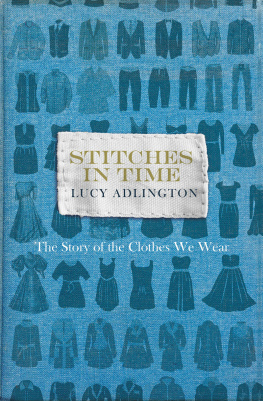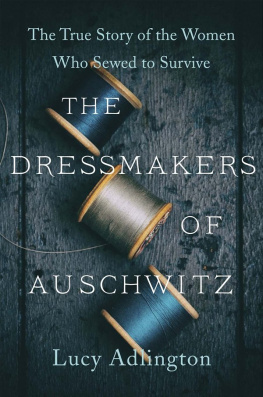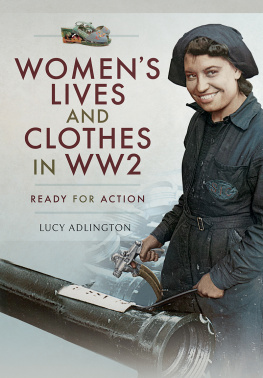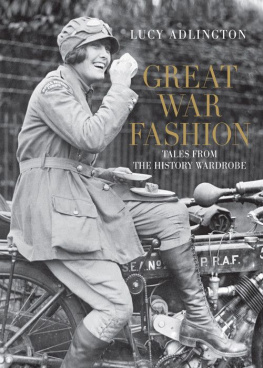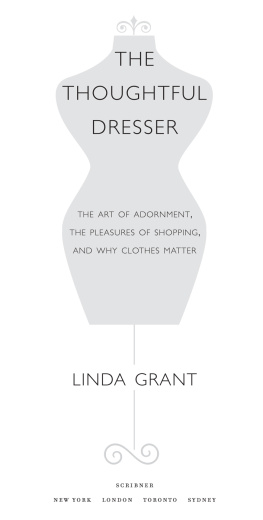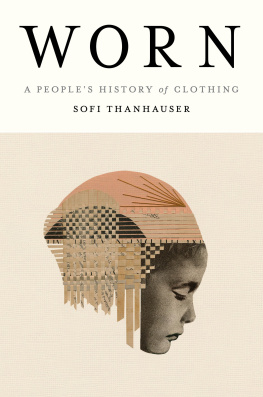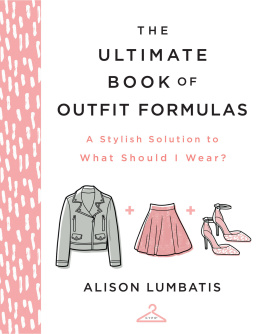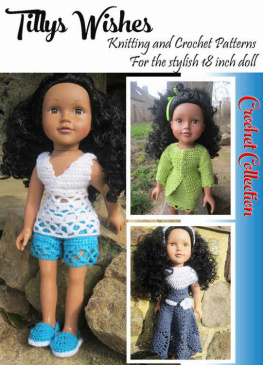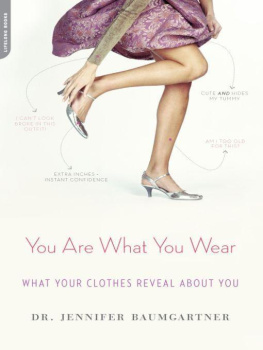CONTENTS
About the Book
Riffling through the wardrobes of years gone by, costume historian Lucy Adlington reveals the rich stories underlying the clothes we wear in this stylish tour of the history of fashion, from ancient times to the present day.
Starting with underwear did you know Elizabeth I owned just one pair of drawers, worn only after her death? she moves garment by garment through Western attire, exploring both the items we still wear every day and those that have gone the way of the dodo (sugared petticoats, farthingales and spatterdashers to name but a few).
Beautifully illustrated throughout, and crammed with fascinating and eminently quotable facts, Stitches in Time shows how the way we dress is inextricably bound up with considerations of aesthetics, sex, gender, class and lifestyle and offers us the chance to appreciate the extraordinary qualities of these, our most ordinary possessions.
About the Author
Lucy Adlington took an English degree from the University of Cambridge and an MA in Medieval Studies from the University of York.
After many years running unique hands-on history workshops and presentations for museums, schools and heritage sites, Lucy now specialises in costume history, with a passion for the early twentieth century. She collects nineteenth- and twentieth-century costume. Her ambition is to own an eighteenth-century gown of Spitalfields silk. She runs the popular History Wardrobe series of talks delightful costume-in-context presentations, all featuring original garments and accessories.
Lucys costume history books, Great War Fashion and Fashion: Women in World War One, are rich with unique images and anecdotes. Lucy also writes history-inspired novels for young adults. Her first five novels, including the award-winning Diary of Pelly D, Carnegie-nominated Burning Mountain and the exciting new Night Witches, are published by Hodder Childrens Books.
ACKNOWLEDGEMENTS
For those who keep curious
With thanks to...
Denise Curran for amazing colour photography
Caroline Bell for exquisite costume line drawings
Meridith Towne for continued collaboration in World Domination
Harry Scoble, Nigel Wilcockson and Kate Shaw for excellent advice
History Wardrobe fans for inspiration and enthusiasm
Elsie Walton for irresistible books, cakes and company
Farmer Richard for enduring the process
Picture credits
Images in this book are from the History Wardrobe collection, with the following exceptions:
Image , 1920s bathers, courtesy of Norman Ellis
Image , trio of girls on the beach, courtesy of Sarah Cleverley
INTRODUCTION
Open your wardrobe, your closet, your bedroom drawers
What do you see hung, folded, strewn or crammed inside? Clothes.
Your own unique collection of garments and accessories, waiting to be worn.
Curious or commonplace, clothes are far too often taken for granted. In Stitches in Time Id like to lead you through time to explore the extraordinary stories of our most ordinary possessions. Ill be delving deep in sock drawers, shoe boxes and jumper shelves; Ill be examining whats on the coat hooks, the tie rack and the dress rail and even whats crawled into the darkest corner of under-the-bed storage. Because your suits, skirts, trousers, undies and boots have not been crafted out of thin air or created on a whim. They hold history like no other aspect of material culture. And clothes also hold memories sometimes shared, sometimes secret.
Clothes are at once the most intimate things we own and the most public. Intimate, because they are next to our skin, soaking up secretions, absorbing perfumes, collecting dandruff, covering or revealing as custom, culture or personal taste dictates. Public because they are often the first thing people notice about us. Our clothes display a staggering amount of information about our gender, culture, class, profession, status, morality and creativity. Yet we usually we fling them on without a thought for the wealth of meaning they carry.
This is by no means a definitive history. No one volume could be. There are infinite permutations of how billions of individuals wear innumerable different garments across different times, cultures and continents. For relative brevity and the sake of my sanity Ive focused on the last 200 years of clothes, while still tracing each item back as far as possible to antiquity to show how it evolved.
Stitches in Time concentrates on Western clothes. It is Eurocentric. In fact, it is rather British at times. This is by no means to disregard non-Western traditions, or to diminish the rich and varied stories of clothes from other countries and cultures some of these are included, when they have a part to play in my chosen themes. The sari, the kaftan and the niqab are seen in the West with increasing familiarity, after all. However, my focus is so place-specific because I have naturally been drawn to relatively local sources costume collections, letters, diaries, portraits, funeral effigies, magazines and photographs which I can personally view; also, people I can personally interview.
My research has taken me into the worlds of literature, art, politics, fashion, trade, technology, transport and exploration. Of course theres always more to know. Even as I write this introduction my mind is darting away, and fretting But I didnt mention this I wonder if that and Has anyone ever found out why ?
I came into the world of costume history as a child, quite by accident. Id run out of Sellotape for fastening outfits onto my 1970s Sindy doll (Sellotape being quicker than sewing for an impatient seven-year-old) and so dived into a pile of library books instead. I found myself lost in a delightful volume called Costume Cavalcade page after page of colourful clothes from history. Move forward more than a few decades, and I confess that when I add to my current collection of vintage and antique clothes I often keep an eye out for outfits reminiscent of those featured in the Cavalcade (which I reluctantly returned to the library, later buying my own, treasured copy).
I now run History Wardrobe a company which offers what I hope are rather wonderful costume-in-context presentations across the UK. Its a unique opportunity to showcase everyday clothes and outfits from special occasions; to explore the sad, strange, sensational stories behind the clothes and to meet thousands of people to share clothing histories.
I hope you will enjoy reading this collection of anecdotes and insights as much as Ive enjoyed creating it. I also hope it gives you a renewed appreciation for each and every item in your wardrobe, from luxury labels down to the humblest sock
Lucy Adlington, 2015
www.historywardrobe.com
facebook: History Wardrobe
twitter: @historywardrobe
KNICKER ELASTIC
A young woman in communist Russia was brought before a committee and asked to provide a voluntary loan to help fund the Great Patriotic War. She showed her objection by bending over, lifting her skirt and saying, Comrade Stalin and the rest of you can kiss me just wherever you find convenient. There was an embarrassed silence, then one committee member murmured to another, Did you see she wasnt wearing any knickers?

